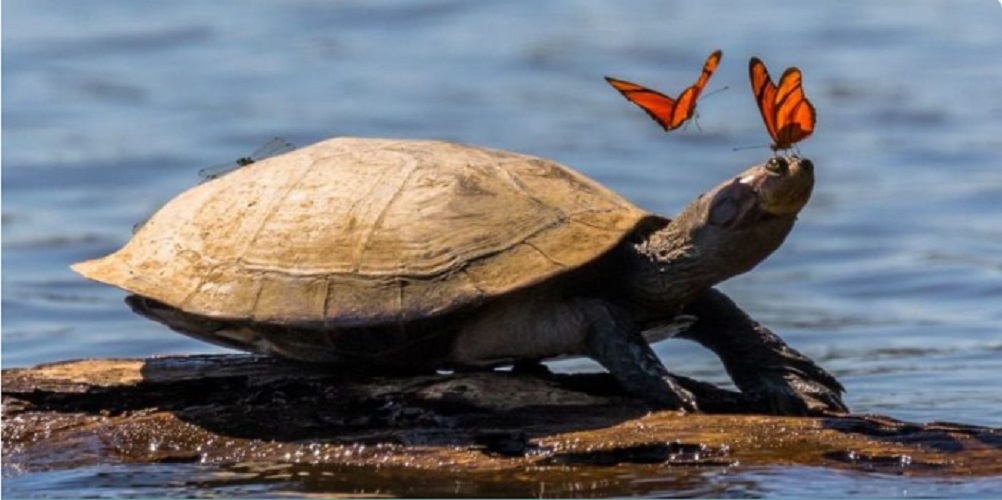What is the Peruvian jungle?
We explain what is the Peruvian jungle, or Peruvian Amazon, its history, location, relief, flora and fauna. In addition, examples of other forests.
-
What is the Peruvian jungle?
It is known as Peruvian jungle or, more correctly, Peruvian Amazon to the portion of the territory of Peru that is occupied by large areas of jungle biome belonging to the South American Amazon . It is a leafy, humid and tall plant extension, which has the largest share of biodiversity and endemism in the continental world.
The Amazon is the largest jungle on the planet , and extends in part of the territories of Peru, Colombia, Ecuador, Brazil and Venezuela. In Peru it occupies 782,880 km 2 of territorial surface, corresponding to 62% of the territory of the country and 13% of the total of the continent, and the second largest after Brazil.
It is the least densely populated region (8%) of this country . However, it enjoys the greatest human diversity, since different Aboriginal ethnic groups make life in it. The Peruvian jungle is an ecologically very important region, given the gigantic biodiversity it hosts, quite safe from the intromissions of humanity .
Together with the rest of the Amazon, it constitutes one of the great plant lungs of the planet , responsible for the generation of oxygen and carbon fixation necessary to keep the planetary temperature stable and sustain the margins of animal life .
-
Location of the Peruvian jungle

The Peruvian jungle begins in the eastern foothills of the Andean Cordillera, and extends to the Peruvian political borders with Brazil, Colombia and Ecuador , in the territory of the Peruvian departments of Loreto, Amazonas, San Martín, Ucayali and Madre de Dios. All this, of course, in the center-west of the South American subcontinent .
It is divided into mountain jungle or high jungle (in the mountains) and rainforest or low jungle (in the plain and the piedmont)
-
History of the Peruvian jungle
The origin of the Amazon rainforest began 20 million years ago , when tectonic movements in the region caused the gradual uprising of the Andes Mountains, causing the Amazon basin to become a system of lakes.
Although after this movement the area was covered with water, it began to dry up 10 million years ago . Thus, the animal and plant species of the region were able to colonize the new and fertile territory, then expand and diversify rapidly, laying the foundations of the biological landscape that exists today.
During the period of the Spanish conquest and colonization of America, this territory was associated with the indigenous myths of El Dorado and the Country of Cinnamon. During the early twentieth century it was a region of intense exploitation of the rubber tree.
-
Peruvian jungle relief

The Peruvian jungle has the peculiarity of covering a territory with several altitudinal floors, that is, with a diverse relief, which fosters its enormous biodiversity.
Generally, they are divided, as we have already said, into high forest (the one that approaches and extends over the Andean mountain range) and low forest (the one that extends in the plains), and thus varying its climatic and rainy conditions.
- High jungle . The mountain jungle is at an average height between 800 and 3000 meters above sea level, exhibiting warm temperatures at the base and getting colder as it rises, as well as the highest levels of rainfall throughout the country , with up to 5,000 mm per year. Its relief is mountainous and complex, with deep ravines and narrow valleys, all covered with impenetrable jungle.
- Low jungle . Between the 800 and 80 meters above sea level, the Amazon plain, an extremely warm tropical forest (annual averages of 28 ° C) and a very high relative humidity (above 75%), given its frequent rainfall. It is a region of heterogeneous soils and abundant rivers.
-
Peruvian jungle fauna

The fauna of the Peruvian jungle is one of the most biodiverse in the entire planet. In fact, after Colombia, Peru is the second country with the largest number of bird species that exists, and the third in terms of mammals .
At least 262 species of amphibians , 806 birds, 293 mammals , 697 continental fish, 180 reptiles and the incredible 2,500 species of diurnal butterflies are known in this jungle . Many of these animal species are endemic to this region , that is, they do not exist in any other in the world.
-
Peruvian jungle flora

Like the fauna, the flora of the Peruvian jungle is abundant, vigorous and extremely diverse, to the point that many of the botanical species that inhabit this region are still to be discovered and classified.
Only in flowering plants (Phanerógamas) there are 7,372 different known species in this region (7% of all the world’s species) and about 700 species of ferns (10% of the world’s species).
-
Other jungles of the world

Apart from the Peruvian Amazon, the world’s main forests can be summarized as:
- The rest of the Amazon , between Brazil, Colombia, Ecuador, Bolivia and Venezuela.
- La Selva del Darién , between Colombia and Panama.
- Lacandora Jungle , between Mexico and Guatemala.
- The Paranaense Forest (of the Paraná River) between Argentina, Paraguay and Brazil.
- The Yungas in northern Argentina, Bolivia and part of Peru.
- The Congo jungle in Central Africa.
- The Guinean Jungle (western and eastern) in Africa.
- The Borneo Jungle .
- The jungle of Madagascar .





